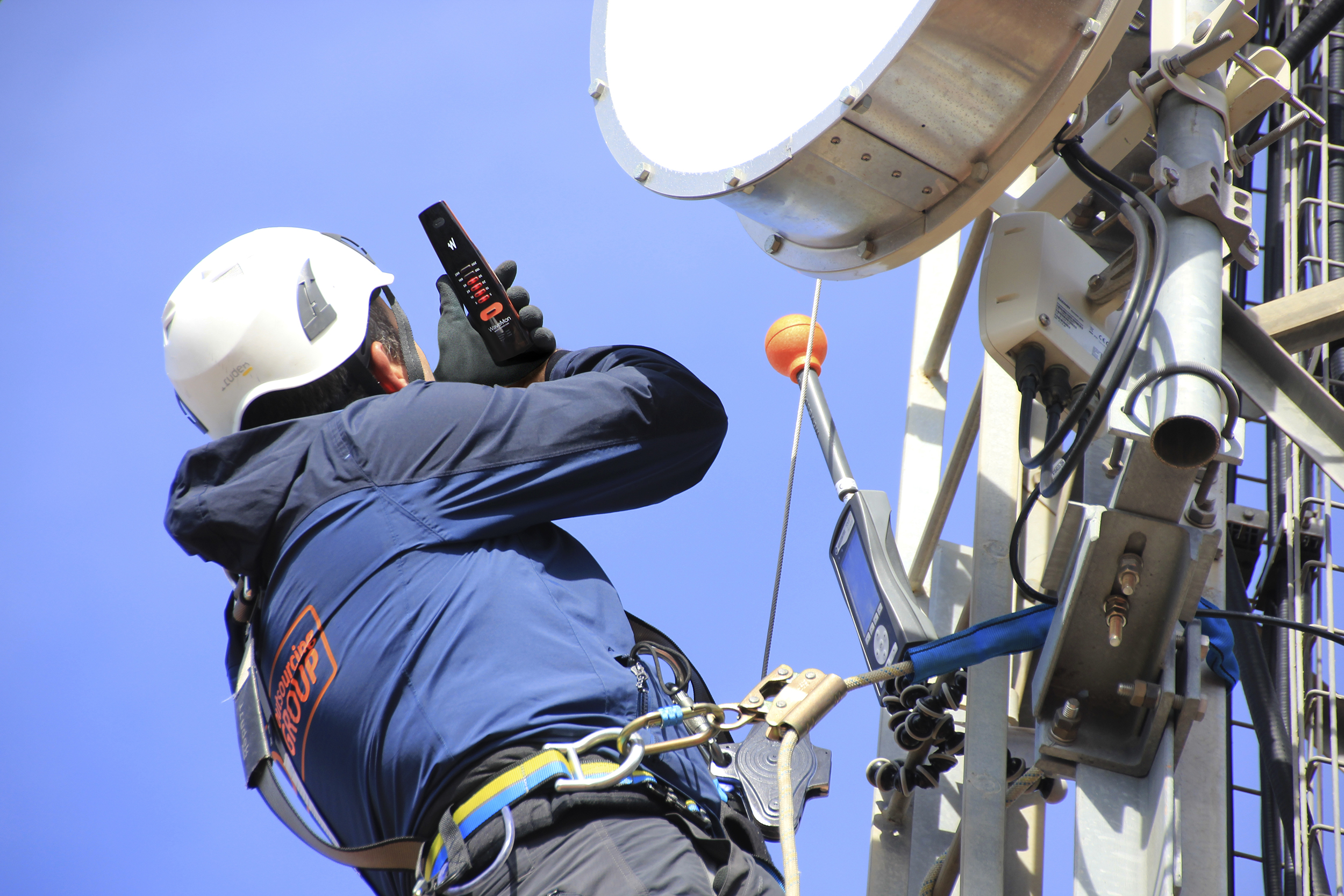Stay up to date with Tempo Announcements and News

Top 5 Safety Concerns: Tower & Rooftop Climbers' Essential RF Guide
Climbing towers or rooftops is a dangerous job, especially when it comes to radiofrequency (RF) safety. RF radiation is invisible and can cause serious health problems, making it critical for tower climbers and roofers to take necessary precautions to minimize their exposure. In this article, we will discuss five key hazards related to RF safety that climbers and roofers should keep in mind while working on cell towers, broadcast antennas, or any other structure that emits RF signals.
1. RF is Invisible - You Don’t Know What’s Around You
The first and perhaps most significant hazard of RF safety is its invisibility. Unlike visible light or sound waves, RF radiation cannot be seen or heard. This means climbers and roofers may unknowingly expose themselves to dangerous levels of RF radiation without realizing it. Moreover, RF signals can penetrate through walls, floors, and other materials, which makes it difficult to determine the source and strength of the radiation. Therefore, it’s essential to have proper training and equipment to detect and measure RF signals before working on a tower or rooftop.
2. Many Transmitters Are Hidden or Concealed
Another challenge with RF safety is many transmitters are concealed from view. For instance, cell towers often have antennas mounted at the top but there could be additional transmitters lower down the tower or inside the structure, emitting the same dangerous levels of RF. Similarly, broadcast antenna maybe installed inside a building or hidden behind panels, making them difficult to spot. As a result, climbers and roofers must be aware of the potential locations of transmitters and take steps to identify them before beginning their work.
3. Damage Has Already Occurred By The Time You Feel Symptoms
A common misconception about RF radiation is that it causes immediate effects, such as burns or rashes, similar to ionizing radiation like X-rays or gamma rays. However, the reality is RF radiation affects the body differently, causing damage at the cellular level over time. By the time symptoms appear, such as headaches, fatigue, dizziness, or disorientation, the damage has already been done. Therefore, it’s critical to take proactive measures to limit exposure rather than relying solely on personal protective equipment (PPE).
4. FCC Guidelines Are Not Enough - Take Your Health Into Your Own Hands
In the United States, the Federal Communications Commission (FCC)sets guidelines for safe RF exposure limits. However, these guidelines are based on thermal effects and only focus on preventing heat-related injuries caused by RF radiation. They do not account for non-thermal effects, including the biological impacts mentioned earlier. Furthermore, these guidelines are not updated or enforced regularly. As a result, climbers and roofers must take responsibility for their own safety by using appropriate PPE, monitoring RF levels, and following best practices for RF safety.
5. Use Personal Safety Monitors Shaped to FCC Recommendations
Using personal safety monitors designed to meet FCC recommendations is a reliable way to ensure RF safety. These monitors continuously measure RF exposure levels and alert workers when they approach unsafe levels. Choosing monitors according to FCC recommendations reduces false positives and provides accurate readings. Calibrating these monitors regularly is also vital to maintaining their accuracy and effectiveness. Monitors must be tuned to detect dangerous levels, which vary by frequency. This process is often known as frequency shaping. RF safety monitors with this capability will alert the user to threatening RF levels accurately without showing false negatives or positives.
Conclusion
Climbing towers or rooftops can be dangerous, especially because of the risks of RF exposure. Climbers and roofers can stay safe while working near sources of RF radiation by remembering these five considerations: RF is invisible, many transmitters are hidden or concealed, damage occurs before symptoms appear, FCC guidelines are insufficient, and FCC-compliant safety monitors are crucial. Always prioritize your health and safety by taking precautions to limit exposure, using appropriate PPE, and adhering to industry best practices.
